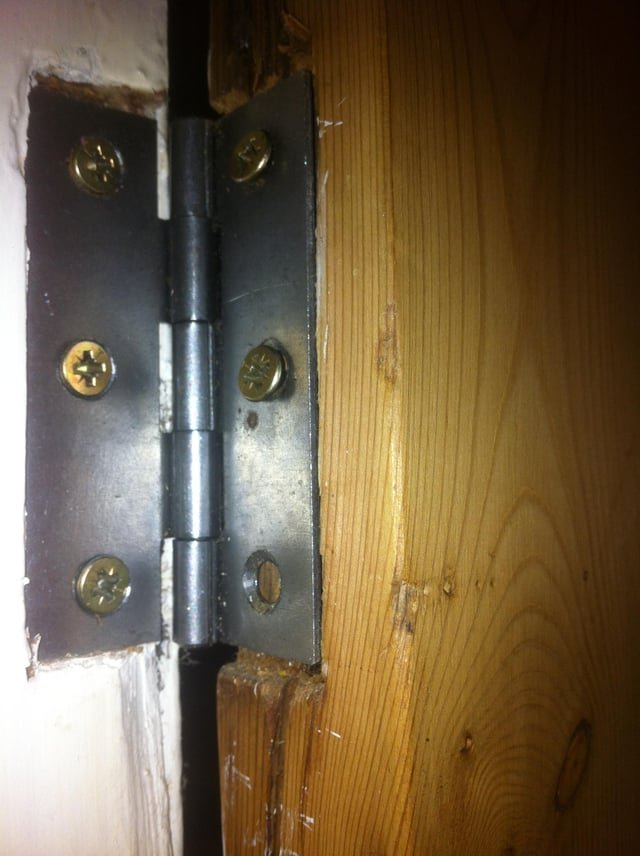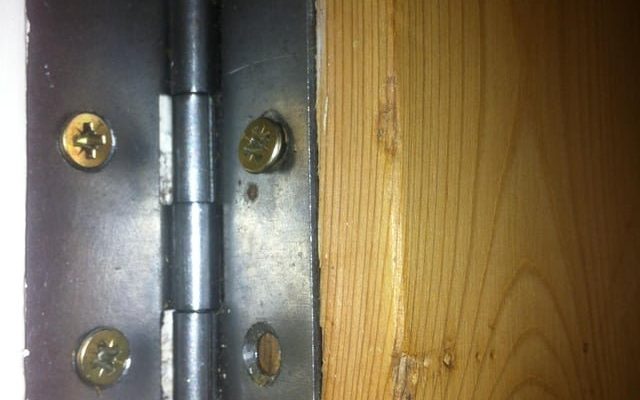
Let’s break it down. Think about how a sponge works: when it’s dry, it’s manageable, but once it soaks up water, it swells and becomes bulky. Wood behaves similarly. Weather changes, humidity, and even the type of wood can influence how your door functions. Understanding this can help you troubleshoot and fix those annoying binding issues with ease.
In this guide, we’ll explore step-by-step how to identify and solve door hinge problems caused by wood swelling. Whether you’re a DIY novice or someone who just wants to make their home more functional, we’ll go through the process together.
What Causes Wood to Swell?
Understanding the reason behind wood swelling is the first step in fixing a binding door hinge. Wood is a natural material and tends to absorb moisture from the air. This phenomenon is often exacerbated by several factors, including:
- Humidity Levels: High humidity can cause wood to swell significantly, making it expand and potentially misalign with the frame.
- Temperature Changes: Wood can also react to temperature variations. When it’s hot and humid, it expands more than in cool, dry weather.
- Seasonal Changes: In winter, wood may contract as it dries, and in summer, it may swell due to moisture in the air.
You might be wondering why this matters. Well, if your door is sticking, it’s probably because the wood has swelled, preventing it from moving freely in its frame. Think of it like thick jam trying to flow through a narrow opening: it gets stuck!
Signs of a Binding Door Hinge
Identifying a binding door hinge involves looking for specific indicators that the wood has swollen. Here are some signs to watch for:
- Sticking Door: If your door feels like it’s catching on something or requires extra force to open or close, it’s likely binding.
- Scraping Noises: Listen for scraping sounds when you move your door. This can indicate that the door is rubbing against the frame.
- Misalignment: Check if the door hangs unevenly or if there’s a gap that looks uneven between the door and the frame.
These signs are crucial; they tell you that something needs attention. While it might feel like a hassle at first, once you know what you’re dealing with, you can tackle it with confidence.
Tools You’ll Need for Troubleshooting
Before you dive into fixing your door hinge, gather a few tools that will make the job easier. You don’t need an extensive toolkit, just some basics:
- Screwdriver: A standard screwdriver will help you tighten or adjust screws on the hinge.
- Wood Shims: These are useful for adjusting the door’s alignment if it’s sticking due to swelling.
- Sanding Block or Plane: This is for removing any excess wood if the door has swollen too much.
- Lubricant: A silicone or graphite lubricant can ease the movement of the hinge.
Having these tools ready can save you time and make the troubleshooting process smoother. You’ll be surprised how little adjustments can make a big difference!
Step-by-Step Guide to Fixing a Binding Door Hinge
Now that you know the signs and tools you’ll need, let’s get into the troubleshooting steps:
1. Inspect the Door and Hinge
Begin by closely examining the door and hinge. Look for any visible signs of swelling or misalignment. Is the hinge straight, or does it look like it’s been thrown off-kilter? Make notes of anything that seems out of place.
2. Tighten the Screws
Next, grab your screwdriver. Sometimes, loose screws can lead to misalignment, which may cause binding. Ensure that all screws in the hinge are tightened securely. If the hinge still feels wobbly, consider replacing screws with longer ones for more stability.
3. Adjust the Hinge Position
If tightening the screws doesn’t solve the problem, try adjusting the hinge position. Use wood shims to tweak its alignment. Insert the shim behind the hinge to raise it slightly, allowing the door more room to move.
4. Sand Down Swollen Areas
If the door is still binding, you may need to sand down any areas where swelling is evident. Gently sand the edge of the door or frame until it moves freely. Start with a coarse grit and finish with a finer grit for a smooth edge.
Preventing Future Wood Swelling
Once you’ve tackled the immediate issue, think about how to prevent your door from binding again in the future. Here are some helpful tips:
- Keep Humidity in Check: Use a dehumidifier in your home, especially during summer months, to control moisture levels.
- Seal the Wood: Apply a water-resistant finish to the door. This can help repel moisture and reduce swelling.
- Regular Maintenance: Regularly check your doors and hinges for signs of wear and tear. A little preventive care can go a long way.
By implementing these strategies, you can extend the life of your door and keep those pesky binding issues at bay.
When to Call a Professional
Sometimes, despite your best efforts, a door hinge may still bind. If you’re noticing persistent problems that you can’t resolve, it might be time to call a professional. Here are some scenarios where expert help is wise:
- Structural Damage: If the door frame or wall around it shows signs of damage, an expert can assess and repair it effectively.
- Extensive Swelling: If the wood has expanded significantly, it might require replacement or professional resizing.
- Persistent Issues: If you’ve tried everything, and the door still binds, a professional can provide deeper insights into the problem.
Embracing the right help can save you headaches down the line, especially if your door leads to your home’s entrance!
Fixing a binding door hinge due to wood swelling doesn’t have to be a daunting task. With the right tools and a little patience, you can troubleshoot the issue like a pro. Remember to regularly check your doors, keep humidity in check, and don’t hesitate to ask for help when needed.
By understanding the signs and solutions, you’re equipped to ensure your doors open smoothly for years to come. So, when your door starts acting up, you’ll know exactly how to respond!
